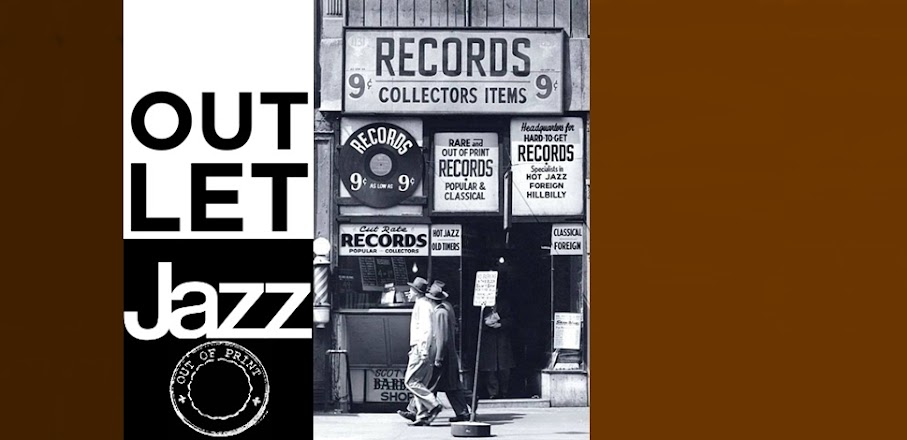Hal Schaefer
The RCA Victor Jazz Workshop
The RCA VICTOR JAZZ WORKSHOP opened its doors recently to the accompaniment of a suitable fanfare by Al Cohn and his chosen trumpets, in an album entitled Four Brass, One Tenor (RCA Victor LPM-1161).
At that time we indicated that this exciting new series would be a transmission belt for new ideas in jazz orchestration, or sometimes for experiments in instrumentation. The present set by Hal Schaefer claims both these distinctions. Hal's background provided him with all the technical tools essential to a creative craftsman in a jazz workshop.
On this album, Hal decided (and RCA Victor's Jack Lewis had a major hand in shaping the decision) he would take the opportunity to spread himself. The RCA VICTOR JAZZ WORKSHOP provided the ideal occasion for a fuller display of his talents.
"In my mind", says Hal, "this was to be predorainantly an arranging and composing album, designed primarily to exhibit my writing rather than my playing. Later on, of course, I'd like to make another piano album, but for this set I really worked hard on getting everything written for maximum effect and maximum sustained interest. Every note had to be pertect; every musician had to understand and enjoy what was intended in the writing".
I'm sure you will agree that as long as it can develop such talents as Hal Schaefer’s, the RCA VICTOR JAZZ WORKSHOP is making an important contribution to the entire course of contemporary jazz. *Leonard Feather (liner notes)*
On this RCA Victor Jazz Workshop production, pianist-writer Schaefer heads three different units. On one, the band was made up of altoist Hal McKusick, Sam Marowitz, and Fudd Gumjaw (Phil Woods), with Schaefer, Milt Hinton, and Osie Johnson. The second had trombonists Billy Byers, Urbie Green, Freddie Ohms, Chauncey Welsh, and bass trombonist Tommy Mitchell with the same rhythm section. The last combined trumpeters Jimmy Nottingham and Nick Travis; drummers Don Lamond and Ed Shaughnessy; Hinton on bass; Schaefer on harpsichord, an instrument he plays with unattractive heaviness.
There are several stimulating as well as humorous moments in the writing, largely involving the freshly changing textures, with the ballads especially charming. But too much of the scoring is static, and it would have been better to have developed some of the ideas further rather than squeezing 12 tunes into one set (especially a workshop project). Ingenuity of instrumentation and cleverness of ideas aren’t enough to make for successful, breathing experimentation. A man also must have much to say that is emotionally convincing, and so far Schaefer hasn’t. The musicianship of all involved is excellent. *Nat Hentoff, Down Beat, April 18, 1956*
Hal Schaefer (1925-2012) was an extremely talented, thoughtful, and polished New York pianist who, by the age of 30, had already immersed himself in many musical circles. From an inauspicious start as a teenager playing with Lee Castle, he went on to join Ina Ray Hutton’s band for two years before settling in Los Angeles in 1943. There, he played with the bands of Benny Carter, Harry James, and Boyd Raeburn, with whom he gained notable recognition.
From the late 1940s onwards he accompanied Peggy Lee and Billy Eckstine before breaking into the world of film as an arranger and rehearsal pianist. His studio work would include the lucrative role of vocal coach to some of Hollywood's biggest stars, including Marilyn Monroe.
In 1954, affected by personal problems, Hal decided to leave the movieland scene behind to start a jazz recording career. Hal returned to New York City in 1955, the same year that RCA Victor inaugurated a new series of recordings titled "The Jazz Workshop", which was specifically intended to showcase new ideas in jazz orchestration, composition, and instrumentation. His producer Jack Lewis asked Hal to record his second album as part of the series. With the simple title of Hal Schaefer, the music featured Hal’s creative writing as well as his skilled andmindful approach as a soloist. For this project he used piano, bass, and drums, adding different instrumentation in each of the three recording sessions: one with three reeds, one with five trombones, and the last with two trumpets, himself on harpsichord and an extra drummer. There are several stimulating as well as humorous moments in the writing, largely involving the freshly changing textures with especially charming ballads and sparkling new ideas in jazz. *Jordi Pujol*
Side 1
1 - Dancing In The Dark
(Dietz, Schwartz)
2 - Imagination
(Van Heusen, Burke)
3 - This One's For Jack
(Hal Schaefer)
4 - A Song Of Love
(Hal Schaefer)
5 - Isn't It Romantic
(Rodgers, Hart)
6 - A New Sound For The Blues
(Hal Schaefer)
Side 2
7 - Let's Have A Celebration
(Hal Schaefer)
8 - Of Things Gone By
(Hal Schaefer)
9 - Blue Skies
(Irving Berlin)
10 - I'm Gonna Sit Right Down And Write Myself A Letter
(Young, Ahlert)
11 - Spring Is Here
(Rodgers, Hart)
12 - Real Lee
(Hal Schaefer)
#1, #2, #7, #8:
Hal McKusick, Sam Marowitz, Phil Woods [a.k.a. Fudd Ganjaw] (alto saxes); Hal Schaefer (piano); Milt Hinton (bass); Osie Johnson (drums).
Recorded in New York City, November 28, 1955.
#3, #4, #9, #10:
Billy Byers, Urbie Green, Chauncey Welsh, Freddie Ohms (trombones); Tommy Mitchell (bass trombone); Hal Schaefer (piano); Milt Hinton (bass); Osie Johnson (drums).
Recorded in New York City, November 9, 1955.
#5, #6, #11, #12:
Jimmy Nottingham, Nick Travis (trumpets); Hal Schaefer (piano, harpsichord); Milt Hinton (bass); Don Lamond, Ed Shaughnessy (drums).
Recorded in New York City, October 17, 1955.


Please, mediafire link.. if it possible... Thanks for all !!
ReplyDeleteMuchas gracias,
ReplyDeleteMuchas gracias
ReplyDelete